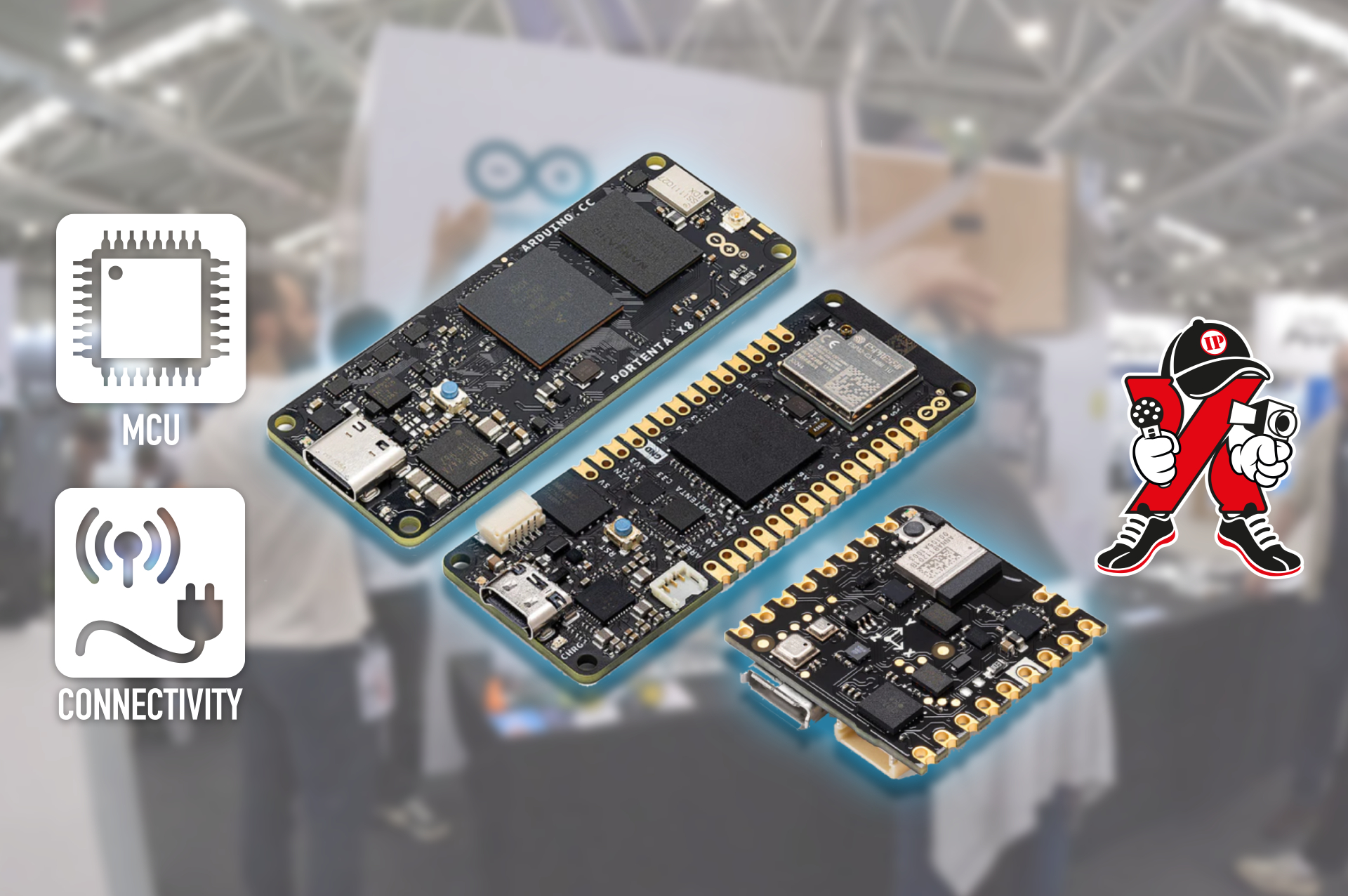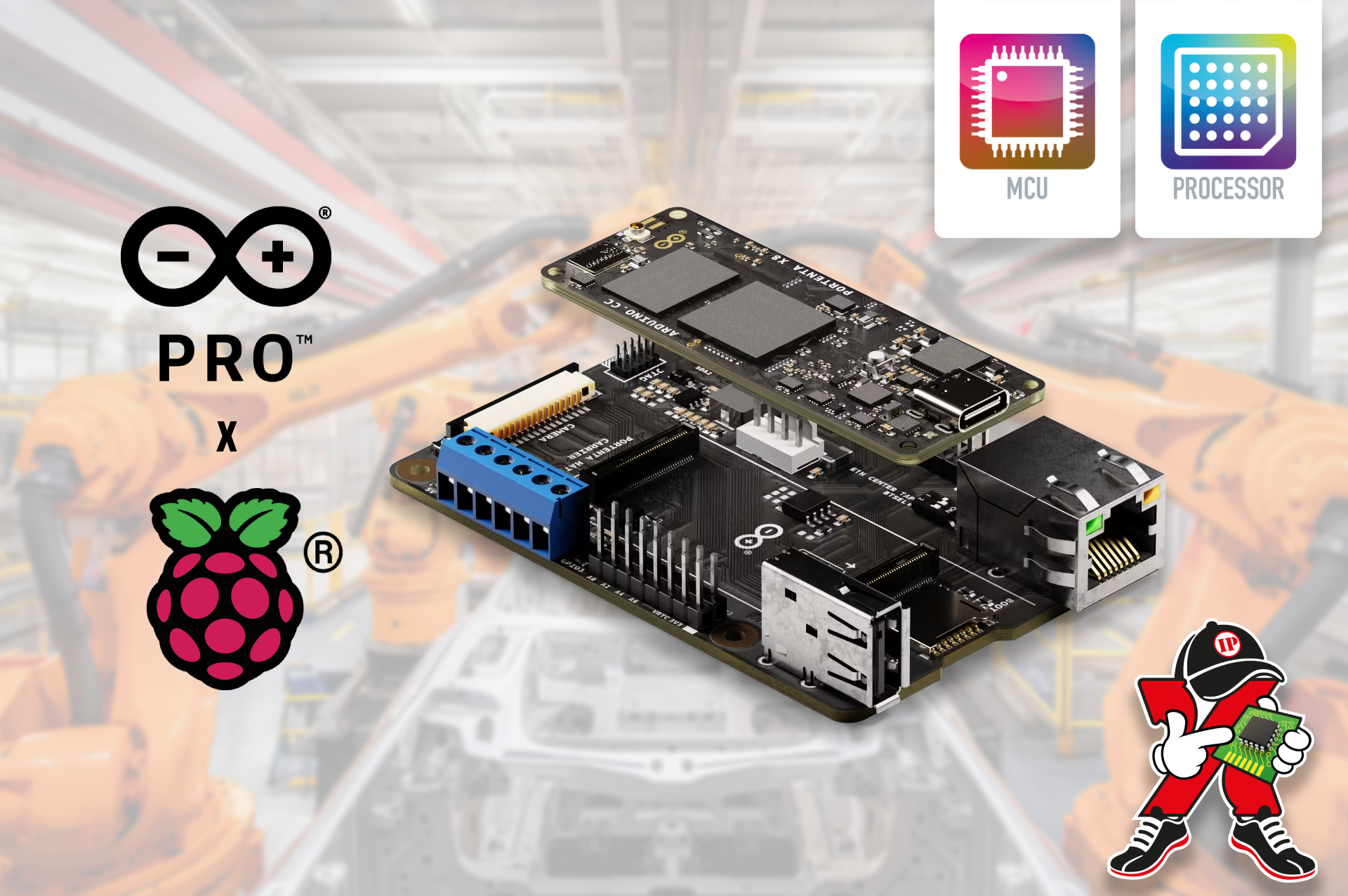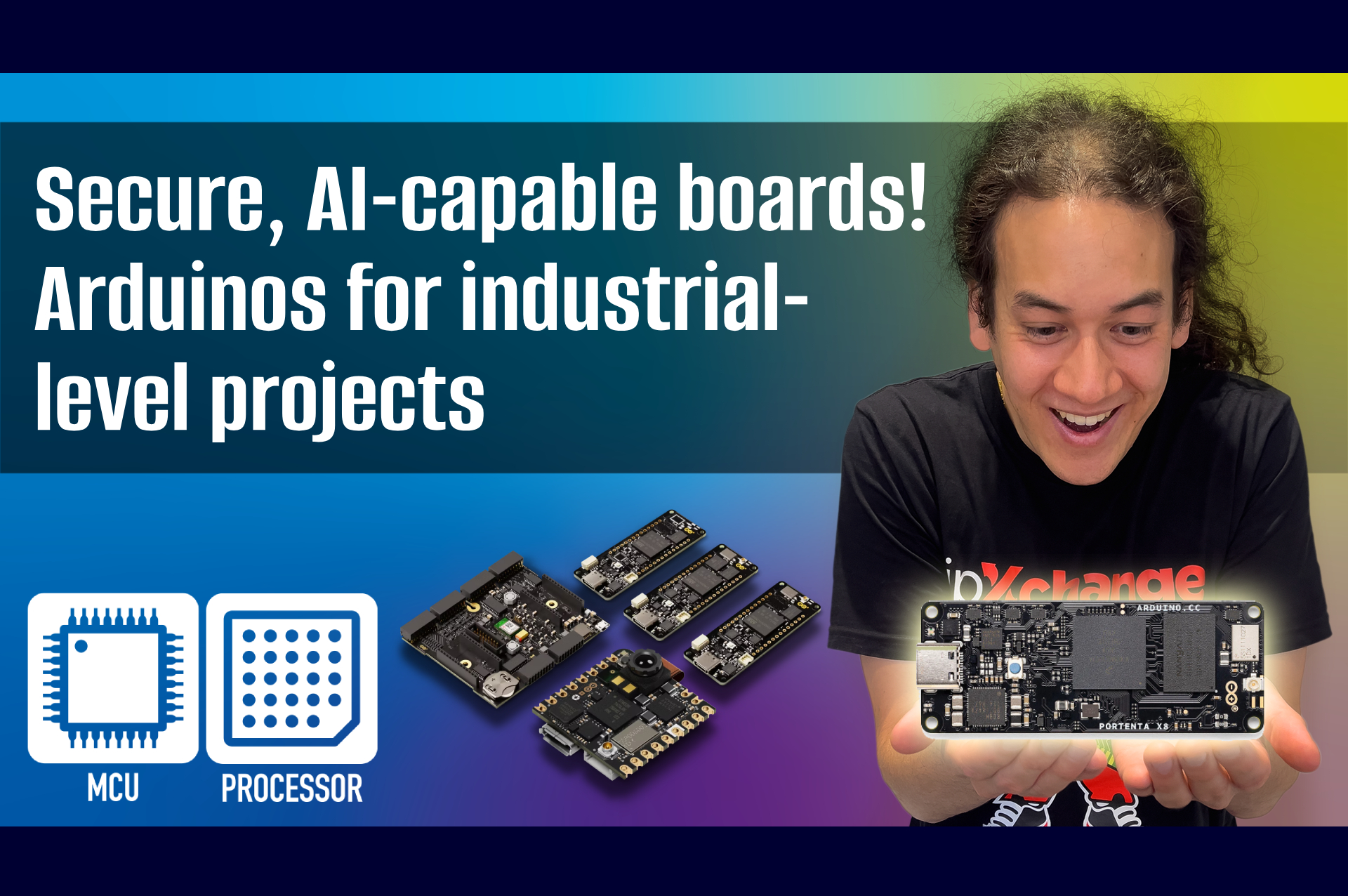The Portenta C33 board presents a lower-cost method of integrating Arduino’s industrial-grade Portenta devices into your next IoT, building automation, smart city, agriculture, smart energy, or standard industrial project, with a -40°C to +85°C operating temperature range and security to match. Unlike other Portenta boards, the Portenta C33 comes in a 66.04 x 25.40 mm form factor with castellated pins for automatic assembly lines, while still retaining a pair of high-density connectors on the back side of the board to enable easy connection to carrier boards – see below for images. Able to be powered using a 3.7-V Li-Po battery (supported by an onboard charging circuit), the USB-C programming connector, or 4.1-6.0 V applied to the VIN pin, the Portenta C33 provides designers with great flexibility to suit a many different deployments.
Arduino’s Portenta C33 is built around an AI- and MicroPython-capable Renesas R7FA6M5BH2CBG Arm Cortex-M33 MCU running at up to 200 MHz, supported by 512 kB SRAM, 2 MB flash, and featuring Arm TrustZone and Secure Crypto Engine 9 to protect your IoT. This is further supplemented by 16 MB QSPI external flash and an NXP SE050C2 secure element.
Connectivity options include 100 Mb ethernet (PHY), Wi-Fi, and Bluetooth LE, and the Portenta C33 is compatible with Arduino IoT Cloud – or third-party services – and Over-The-Air (OTA) updates for remote monitoring and control via a web or mobile interface. Additional interfaces include CAN, SD Card, ADC, GPIO, SPI, I2S, I2C, and JTAG/SWD for debugging.
The pinout of the board is illustrated below:
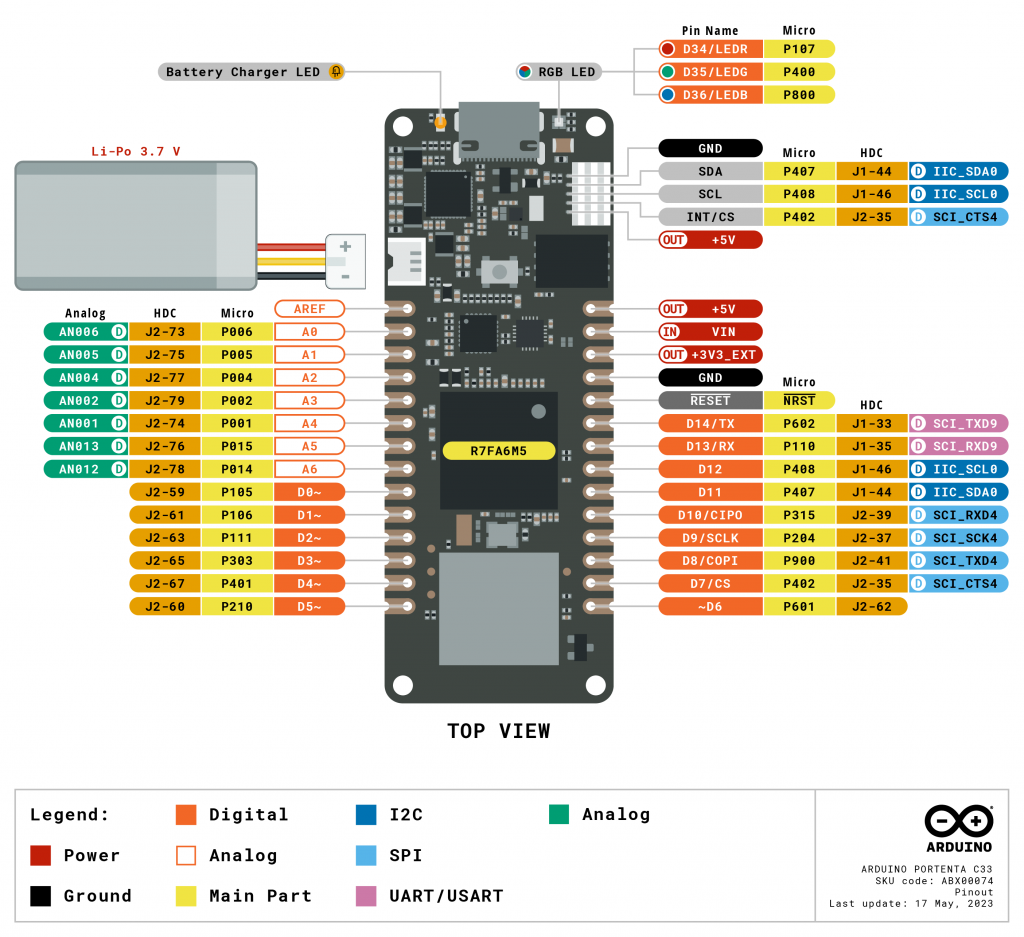
For those interested in learning more, further information on the Portenta C33 can be found in this official datasheet.
The Portenta family also includes turnkey solutions for industrial machine control at low power consumption, breakout boards for easier testing, developing, and debugging, and carrier boards that provide a wide range of physical connectivity options to interface Portenta with the world and other aspects of larger industrial devices. As with many Arduino products, shields for vision and additional connectivity provide a ready-made way to easily add functionality to your design.
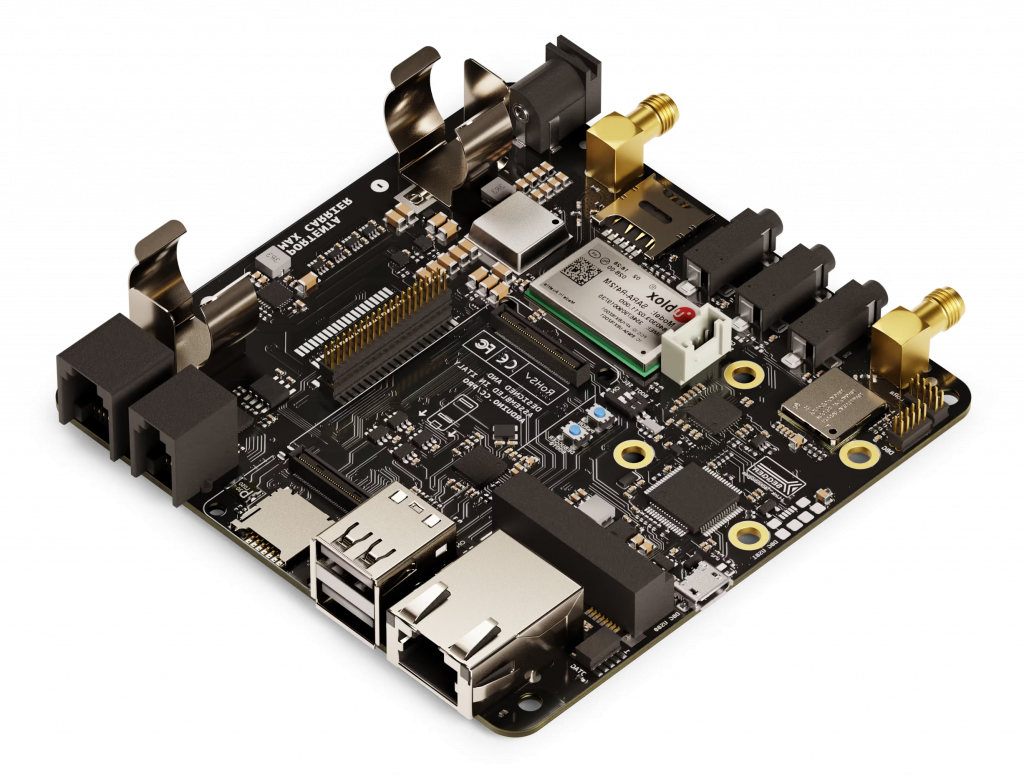
And if you’re a Raspberry Pi ecosystem user, Arduino also offers a breakout board in the form of the Portenta Hat Carrier, which can be used with the Portenta C33 to provide users with easier connection to the CAN, ethernet, and USB peripherals when building your project. With the Portenta Hat Carrier, users also gain access to a microSD card slot, JTAG pins for simple debugging, 16x analogue I/Os, an onboard camera connector for machine vision, and a PWM fan connector for thermal management.

The Portenta Mid Carrier offers another alternative platform for fast IoT prototyping and integration of Arduino’s new 4G wireless modules, which are available in an EMEA-focussed model and a Global variant with added GNSS support. It also enables the use of Arduino’s GIGA Display Shield with Arduino’s PRO line of products. Learn more about this carrier and the 4G wireless modules here.
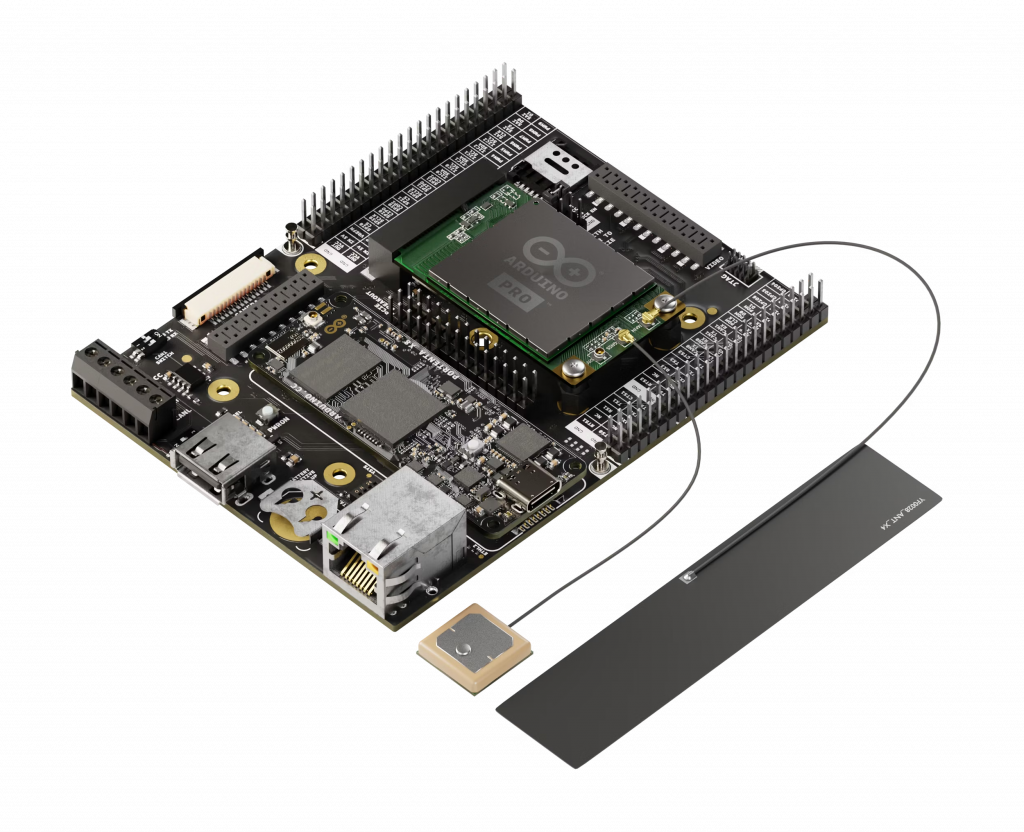
If you would like to evaluate the Portenta C33, either alone or with a carrier board, fill out the form below, and ipXchange will facilitate getting you a sample for your next commercial project.
(Images sourced from Arduino)


